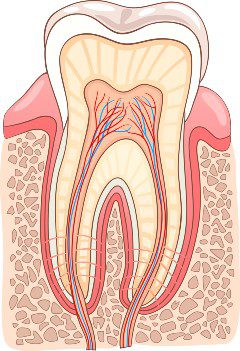Dental Pulp Treatment
2021-05-21
Tooth decay is a big concern for people at just about any age. However, of particular concern is when the pulp of the tooth becomes infected or diseased. This is a case where if it is not treated promptly the tooth can be completely lost. As a matter fact, when the pulp of the tooth remains infected for any length of time, eventually the tooth will have to be extracted. A common remedy for infected tooth pulp is root canal. Conversely, another procedure known as dental pulp treatment can be used as a way to prevent the need for a traditional root canal procedure.

Diseased or Decayed Tooth Material
In cases where tooth decay has not yet reached the inner pulp of the tooth, cavity treatment may be suitable. This is a type of treatment where the first step is removing all decay. Your dentist will drill into the cavity and extract any diseased or decayed tooth material. Next, the area will be thoroughly cleaned and disinfected. The following step involves adding a small amount of sedative after all decay has been removed and the area has been thoroughly disinfected. The main goal is to make sure that absolutely no bacteria comes into contact with the pulp of the tooth.
Chew and Eat Normally
Finally, the dentist will fill the cavity with one of several different types of filling material as a way to strengthen the tooth and prevent any further intrusion by bacteria. The end result is the patient is now able to bite, chew and eat normally. This is a type of pulp treatment that has proven quite successful over the years. Consulting with your dental care provider is the only way to know for sure if this particular type of dental treatment is right for your dental needs. Whether it is an adult or young child, there are many cases where dental pulp treatment is the best option.

Diseased or Decayed Pulp
Another type of pulp treatment is known as indirect pulp caps. In this situation, temporary fillings are placed, and then several months later those fillings are removed to check the progress in terms of pulp healing. If the diseased or decayed pulp has indeed regenerated, any remaining decay is removed and then a permanent filling is placed. Either one of these treatments can be highly effective at saving the tooth and ensuring the highest levels of dental health. Contact your dentist in Walnut Creek, Dr. Darvishzadeh at Walnut Creek Dental today for more information on dental pulp treatment and all that it offers.
Reference:
[1] The Most Common Sources Of Dental Pain
Subscribe To Our Newsletter
Get Updates And Learn From The Best